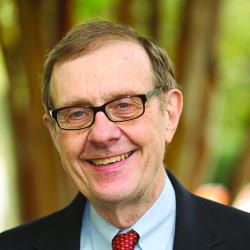The new administration taking shape in Washington inherits not only an economic crisis, but also a mammoth apparatus of agencies and programs, many of which were developed a generation or more ago. In view of that, a president and Congress striving to “build a smarter government” should develop new policies or retool old programs with the latest population trends in mind, especially those shaping and re-shaping metropolitan areas-our nation’s engines of economic growth and opportunity. These include:
- Migration across states and metro areas has slowed considerably in the past two years due to the housing crisis and looming recession. About 4.7 million people moved across state lines in 2007-2008, down from a historic high of 8.4 million people at the turn of the decade. Population growth has dropped in Sun Belt migration magnets such as Las Vegas, NV, and Riverside, CA, and the state of Florida actually experienced a net loss of domestic migrants from 2007 to 2008. Meanwhile, out-migration has slowed in older regions such as Chicago and New York. Many Midwestern and Northeastern cities experienced greater annual population gains, or reduced population losses, in the past year.
- The sources and destinations of U.S. immigrants continue their long-run shifts. About 80 percent of the nation’s foreign-born population in 2007 hailed from Latin America and Asia, up from just 20 percent in 1970. The Southeast, traditionally an area that immigrants avoided, has become the fastest-growing destination for the foreign-born, with metro areas such as Raleigh, NC; Nashville, TN; Atlanta, GA; and Orlando, FL ranking among those with the highest recent growth rates. As they arrived in these new destinations, immigrants also began to move away from traditional communities in the urban core. Today, more than half of the nation’s foreign-born residents live in major metropolitan suburbs, while one-third live in large cities.
- Racial and ethnic minorities are driving the nation’s population growth and increasing diversity among its younger residents. Hispanics have accounted for roughly half the nation’s population growth since 2000. Already, racial and ethnic minorities represent 44 percent of U.S. residents under the age of 15, and make up a majority of that age group in 31 of the nation’s 100 largest metro areas (and a majority of the entire population in 15). Hispanic populations are growing most rapidly in the Southeast; Asian populations are rising in a variety of Sun Belt and high-tech centers; and the black population continues its move toward large Southern metro areas like Atlanta, Houston, and Washington, D.C.
- The next decade promises massive growth of the senior population, especially in suburbs unaccustomed to housing older people. As the first wave of baby boomers reaches age 65 in less than two years, the senior population is poised to grow by 36 percent from 2010 to 2020. Their numbers will grow fastest in the Intermountain West, the Southeast, and Texas, particularly in metro areas such as Raleigh, NC; Austin, TX; Atlanta, GA; and Boise, ID that already have large pre-senior populations (age 55 to 64). Because the boomers were the nation’s first fully “suburban generation,” their aging in place will cause many major metropolitan suburbs— such as those outside New York and Los Angeles—to “gray” faster than their urban counterparts.
- Amid rising educational attainment overall, the U.S. exhibits wide regional and racial/ethnic disparities. While 56 percent and 38 percent of Asian and white adults, respectively, held post-secondary degrees in 2007, the same was true of only 25 percent and 18 percent of blacks and Hispanics. These deep divides by race and ethnicity coincide with growing disparities across metropolitan areas owing to economic and demographic change. In knowledge-economy areas such as Boston, MA; Washington, D.C.; and San Francisco, CA, more than 40 percent of adults hold a bachelor’s degree. Meanwhile, in metro areas that have attracted large influxes of immigrants, such as Houston, TX; Greenville, NC; and most of California’s Central Valley, more than 20 percent of adults lack a high school diploma. And some Sun Belt metro areas, such as Las Vegas, NV, and Riverside, CA, have fast-growing populations at both ends of the attainment spectrum.
- Even before the onset of the current recession, poverty rose during the 2000s, and spread rapidly to suburban locations. Both the overall number of people living in poverty and the poverty rate rose from 2000 to 2007; today, working-age Americans account for a larger share of the poor than in the last 30 years. After diverging in the 1970s and 1980s, the gap between central-city and suburban poverty rates has narrowed somewhat. More notably, the suburban poor surpassed the central-city poor in number during this decade, and now outnumber them by more than 1.5 million. The suburban poor have spread well beyond older, inner-ring suburbs, which in 2005-2007 housed less than 40 percent of all poor suburban dwellers. Yet even as poverty spreads throughout the metropolis, the concentration of poverty in highly distressed communities—after dropping in the 1990s—appears to be rising once again in the 2000s.
Even as the nation enters an extended period of economic uncertainty, the continued demographic dynamism of our metropolitan areas raises key policy and program issues for the new government in Washington. Steps to implement the recovery package wisely, pursue immigrant integration alongside immigration reform, close educational achievement and attainment gaps, combine the planning of transportation and housing, and provide needed support to low-income workers and families should take account of our constantly evolving and changing metropolitan populations.
Download the full report » (PDF)




